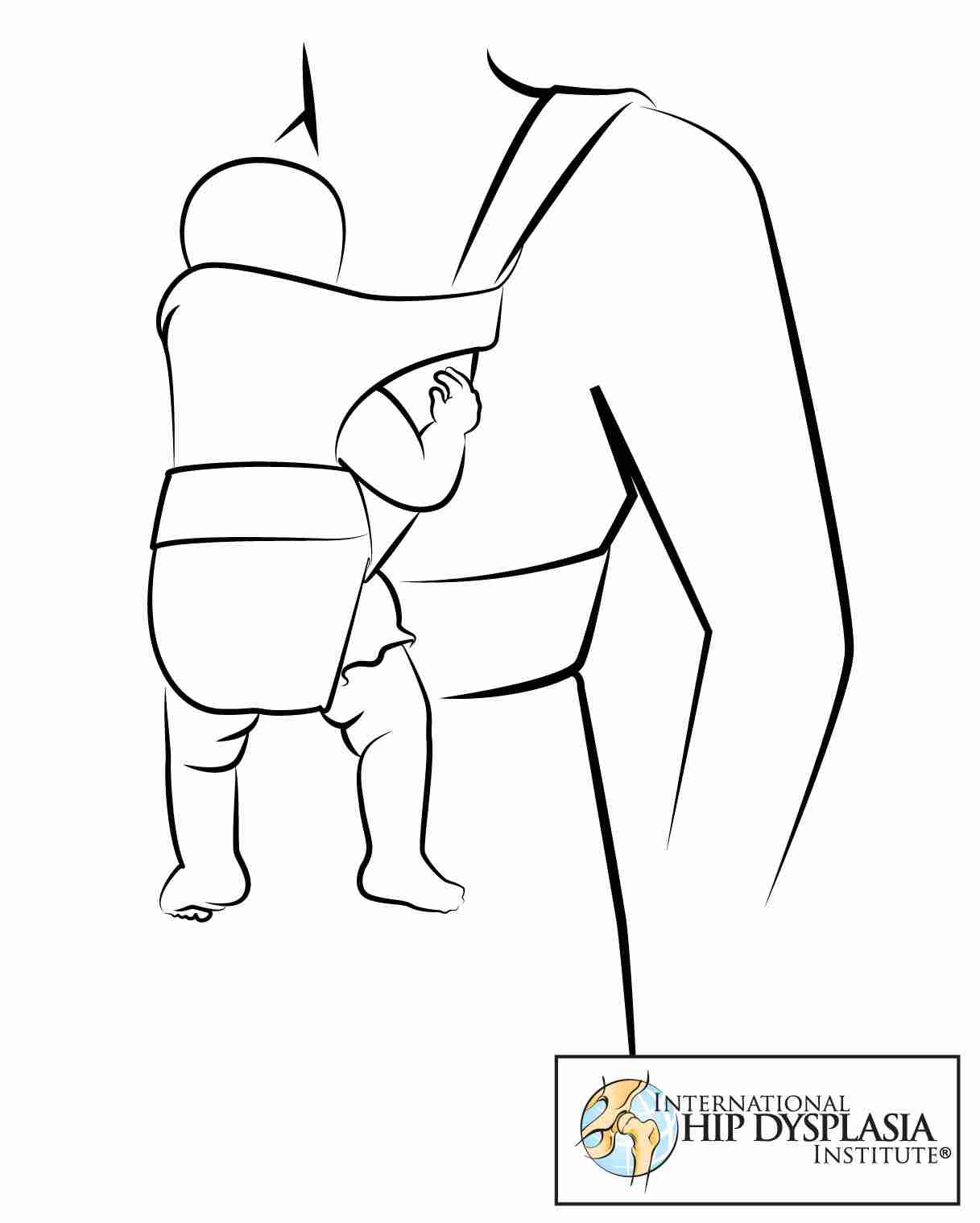Baby Carriers & Other Equipment
IHDI Educational Statement
Click here to view products deemed “hip-healthy” by the International Hip Dysplasia Institute.
Baby Carrier Summary Statement: Baby carriers may be used for short-term purposes during transport or for occasional parental activities. It is the opinion of the International Hip Dysplasia Institute that periodic short-term use of a baby carrier unlikely to have any effect on hip development.
In contrast, there is evidence that carrying a baby on the mother’s body (or father’s body) is likely to influence hip development during the first six months of life when the baby is carried for many hours each day for purposes of bonding, or infant care.
The purpose of this educational statement is to provide information about healthy hip development to guide manufacturers in the development of optimum designs for infant equipment, so parents can make appropriate choices about the devices they use for their babies. Parents and caregivers are encouraged to choose a baby carrier that allows healthy hip positioning, in addition to other safety considerations. When babies are carried, especially for prolonged periods of time, the hips should be allowed to spread apart with the thighs supported and the hips bent.
Education Statement: Within the womb, a baby spends a long time tucked in the fetal position with both hips and both knees in a bent position. Infants that are not in this position prior to birth have a high risk for hip dislocation and hip dysplasia.
Baby in normal (fetal) womb position.
After birth, it takes several months for the joints to stretch out naturally. Babies that have been in the breech (bottom first) position may need even more time to stretch out naturally. The hip joint is a ball and socket joint. During the first few months of life the ball is more likely to be loose within the socket because of stretching during the birth process. Also, babies are naturally flexible and the edges of the socket are made of soft cartilage like the cartilage in the ear that can bend easily. If the hips are forced into a straight stretched-out position too early, then the ball may deform the edges of the socket or slip of the socket altogether (hip dislocation). Hip dysplasia occurs when the socket is misshapen or when the hip is dislocated. Dislocation in babies is almost never painful similar to bending your ear, so this may go undetected until walking age and may also result in painful arthritis during adulthood. The risk of hip dysplasia or dislocation is greatest in the first few months of life. By six months of age, most babies have nearly doubled in size, the hips are more developed and the ligaments are stronger, so hip dysplasia is less likely to develop in infants after six months of age.
The unhealthiest position for the hips during infancy is the opposite of the fetal position when the legs are held straight in extension with the hips and knees stretched out and the legs brought together. The risk to the hips is greater when this unhealthy position is maintained for a long time. Healthy hip positioning avoids positions that may cause or contribute to development of hip dysplasia or dislocation. The healthiest position for the hips is for the hips to fall or spread (naturally) apart to the side, with the thighs supported and the hips and knees bent. This position has been called the M-position, jockey position, straddle position, spread-squat position or human position. Free movement of the hips without forcing them together promotes natural hip development.
Some types of baby carriers and other equipment may interfere with healthy hip positioning. Such devices include but are not limited to baby carriers, slings and wraps. These devices could inadvertently place hips in an unhealthy position, especially when used for extended periods of time. Any device that restrains a baby’s legs in an unhealthy position should be considered a potential risk for abnormal hip development. It is also important to assess the size of the baby and match the device and carrier to the size of the child so that the hips can be in a healthy position during transport. Parents are advised to research the general safety and risks of any device they wish to use. When in doubt, we recommend involving your primary health-care provider in any further decision-making that may be medically relevant.
These series of drawings demonstrate typical devices that allow healthier hip positioning in comparison to those which do not. While there is evidence of harm from the tightly swaddled position with the legs straight out, and there is evidence of healthy benefit from the M-position, little is known about the intermediate positions. It is unlikely that intermediate positions cause any harm when maintained for short periods of time.
Baby Carriers

Thigh NOT supported to the knee joint. The resulting forces on the hip joint may be inappropriate for prolonged use when infants have loose hip joints or hip dysplasia.
Thigh is supported to the knee joint. The forces on the hip joint are minimal because the legs are spread, supported, and the hip is in a more stable position.
Thighs spread around the mother’s torso and the hips bent so the knees are slightly higher than the buttocks with the thighs supported.
Baby Slings
Baby carriers that force the baby’s legs to stay together may contribute to hip dysplasia.
Baby carriers should support the thigh and allow the legs to spread to keep the hip in a stable position.
